Pecorino is the generic name for all 100% ewe’s milk cheeses in Italy. They are largely made in the central and southern parts of the country, as well as the Mediterranean islands, and are named after the word for a sheep which is una pecora. The rennet used in the cheesemaking comes from the dried stomach of milk-fed lambs. Of course each pecorino will be different, depending on the ewe, the season, the region, but broadly the best-known pecorino cheeses fall into four main categories:
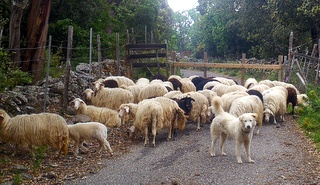
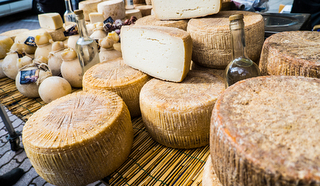
Pecorino Romano
This one is strong and piquant with a dry and salty flavour and is most commonly used as an excellent cheese for grating. It originated in Lazio but nowadays is often made in Sardinia, as many of Lazio’s cheesemakers moved to the island in the 19th century to take advantage of the extra space for sheep grazing. An early form of this cheese was used as a staple to feed Roman armies over 2,000 years, as it had a long lifespan and was known to be a high energy food.
Pecorino Sardo
Again made in Sardinia, this cheese can be eaten as a table cheese when it is young – ideally between two weeks and three months after it is made. It is tasty and salty and its piquancy increases with age. It is also popular in Sardinia to smoke pecorino cheeses. It must be made with the milk of the local breed of sheep: the sarda. On our Heart of Sardinia tour we have plenty of opportunity to taste Pecorino Sardo at our picnic lunches, and particularly the lunch we have with local shepherds.
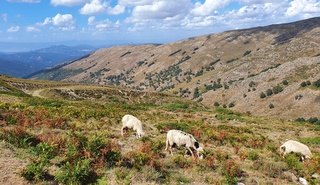
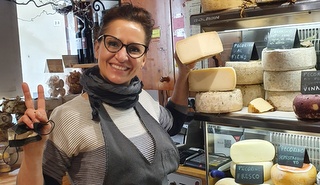
Pecorino Siciliano
This cheese from Sicily is the only one which can be eaten very fresh – on the day it is made – when it has a rich milky flavour. If left to mature for over four months this also becomes a good cheese for grating.
Pecorino Toscano
The best of the Tuscan pecorino cheeses come from the clay hills south of Siena known as le crete. They are good to eat after two weeks of ripening, when they have a soft texture and mellow flavour and as they mature they remain good table cheeses. The colour of the rind gives a clue as to the maturity, a red rind is semi-stagionato and the cheese is not as hard or piquant as a darker or black rind, known as stagionato. They pair well with local honey, or fruits such as figs or pears. Our Etruscan Trails in Central Italy tour takes us right through this area south of Siena, and we spend time in the village of Pienza whose little streets are full of cheese shops.
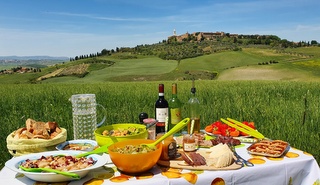
The practice of ripening cheeses underground dates back to the Middle Ages and was used to protect it and help its maturation. During the months of Covid lockdown many entrepreneurial cheesemakers, finding themselves suddenly unable to sell their produce directly at markets or to restaurants, buried their cheeses in underground caves, known as una fossa, which helped to preserve them and even enhance their flavours.
Today pecorino is made with all sorts of extra ingredients such as truffles, peppercorns or peperoncino, and extra layers of flavour can be added to the cheese by wrapping it, for example, in walnut leaves or maturing it under ash.
